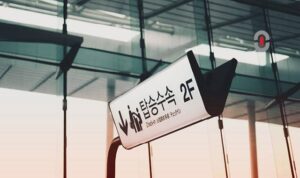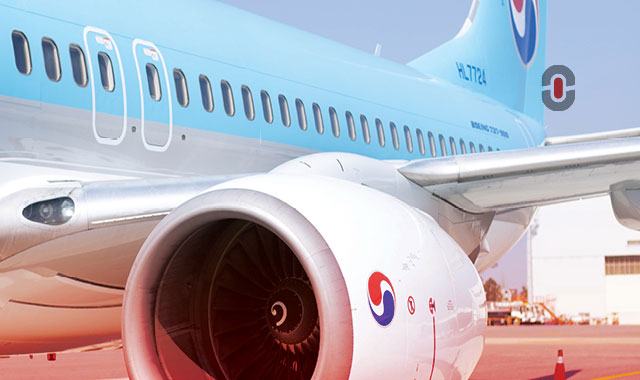The benefits of accurate and timely Korean aerospace translation cannot be overstated. An incorrect translation or a minor mistranslation could have disastrous consequences. These can not only be costly and dangerous, but they can also significantly damage a business’s reputation. This is why aerospace translation services should be professional and precise.
However, this does not mean that they don’t come without challenges. In this blog article, we’ll explore the challenges of Korean aerospace translation. But before this, we’ll delve into what exactly aerospace translation means, what industries it functions in tandem with, and what types of documents a Korean aerospace translation may entail. So, without further ado, let’s get started.
What does aerospace translation entail?
We all know that the aerospace industry is highly regulated and that it plays a crucial role in the global transportation of passengers, goods, space exploration, and even military endeavors. Because of this, aerospace translation services is a broad umbrella term for translating industry-specific documents from a source language to a target language. In this case, we are specifically talking about Korean aerospace translation into multiple languages with accuracy, efficiency, precision, and professionalism.
What translation services are related to the industry?
Aerospace translation services that specifically deal with aerospace translation are not limited to commercial passenger transport. There is a much broader scope of translation services as it relates to Korean aerospace translation. For example, it can be divided into some of the following sub-industries and related industries:
- Commercial, passenger transport (customer-facing)
- Airline partners
- Airplane parts manufacturers
- Aircraft manufacturing
- Commercial avionics
- Maintenance, repair, and overhaul (MRO)
- Flight simulation and training
- Aerospace engineering (such as engines, electronic components and flight instruments)
- Communication, navigation, and information management
- Marketing and distribution of avionics in global markets
- Software applications
- Aerostructure services
- Fan blade repair
- Landing gear services
- Rotary and fixed-wing services
What types of documents are translated for the aerospace industry?
Korean aerospace translation is an extremely broad industry that requires the utmost precision at every step of the translation process. Examples of documents that are typically translated for the aerospace industry include:
- Safety plans
- Technical manuals for engine repairs
- Maintenance documents
- Proposals
- Technical drawings or blueprints
- CAD file translations
- MIL Specifications
- Technical reports
- Logistics documents
- Standard operating procedures
- Quality control documents
- Raw material documents
- Software
- Assembly line documents
- Training documents
- Technical processes
- Operational manuals
- Requests for proposals
- Business proposals
- Tenders
- Legal agreements and contracts
- Regulatory documents
- Government-level contracts
- Quality control documents
- Administrative documents
- User manuals
- Aviation marketing and blog articles
Challenges specific to the aerospace industry and the Korean language
No matter what language you need to be translated from or to Korean, Korean aerospace translation requires speed and precision while following industry-specific rules. It also requires expert translators and linguists who have advanced knowledge of the sector. These linguists should not only be native speakers with accurate industry knowledge, but they also need to be very well-versed in the industry jargon.
Furthermore, it must be noted that the aviation and aerospace industry is highly regulated and organizations operating within this field also need to comply with industry, company, and government rules.
With this backdrop against which the industry players operate, it must be noted that some challenges with Korean aerospace translation must be acknowledged to proceed with quality and timely aerospace translations. Some of these include the following:
1. Language challenges
 Because of the intricacies of the Korean language, Korean translations face challenges at the outset. However, this issue becomes even more pronounced in the space of aerospace translation services. Whether a translation services provider needs to deal with translating documents related to the aircraft manufacturing process and translating content for raw material providers or something else, ensuring that cultural and linguistic barriers are overcome is a top priority for any quality linguist. It’s not only about being grammatically correct. It’s also about localizing and tailoring the content for cultural differences.
Because of the intricacies of the Korean language, Korean translations face challenges at the outset. However, this issue becomes even more pronounced in the space of aerospace translation services. Whether a translation services provider needs to deal with translating documents related to the aircraft manufacturing process and translating content for raw material providers or something else, ensuring that cultural and linguistic barriers are overcome is a top priority for any quality linguist. It’s not only about being grammatically correct. It’s also about localizing and tailoring the content for cultural differences.
2. Technical challenges
A further challenge that arises with Korean aerospace translation refers to the technical aspect of the translation in question. Translators must be well-versed in technical terms used in this highly technical industry, irrespective of whether they are translating a safety manual, a business plan, or an operations manual. It, therefore, requires strong language competency in terms of both the source and target language as well as strong competency in terms of industry-specific jargon and technical terminology.
3. Confidentiality
The aerospace industry is highly regulated but also a highly competitive space. Many players rely on the strict need for confidentiality to help them remain competitive whether they are launching a new aviation feature, design, part, or a new plane altogether. Translators and linguists doing aviation-related Korean translation are required to maintain the confidentiality of their client’s work at all times in addition to upholding the highest professional standards required by the industry.
4. Formatting challenges
Whether it’s a Korean translation in the aviation industry or not, it is expected that a translated document will uphold the same formatting style as the original document. However, when it comes to Korean translations, English text may take up 15 words whereas Korean could simply use eight characters, thereby taking up that much less space and affecting the overall layout of the document. The use of characters as opposed to words used in Korean translation can also pose a challenge.
Hiring Professional Korean Aerospace Translators
Korean aerospace translations and aerospace translation services that specifically deal with Korean translation do not require but instead demand precision of the translated output because mistakes can be extremely costly, resulting in damage to property, financial loss, injury, and even loss of life. In addition to this, Korean aerospace translation must often be carried out within tight time constraints.
Despite these challenges, the benefits of accurate Korean translation in the context of aerospace translation can lead to greater competitiveness, better compliance, and much stronger results for the aviation organization involved. As such, the benefits and value of accurate and timely Korean aerospace translation cannot be underestimated, and partnering with the right service provider should be a must for any organization that wants to compete effectively.
